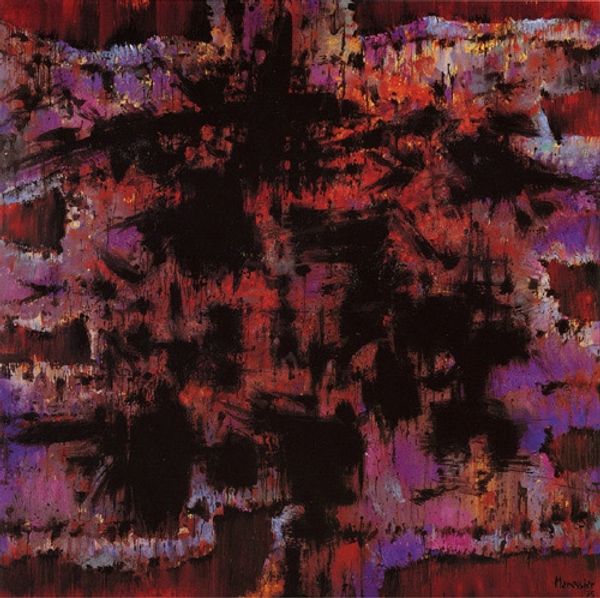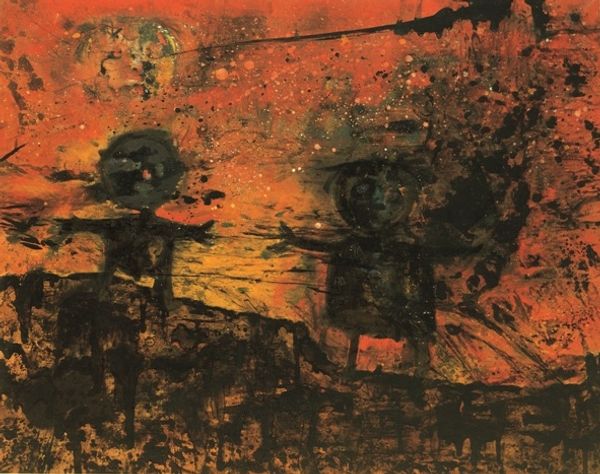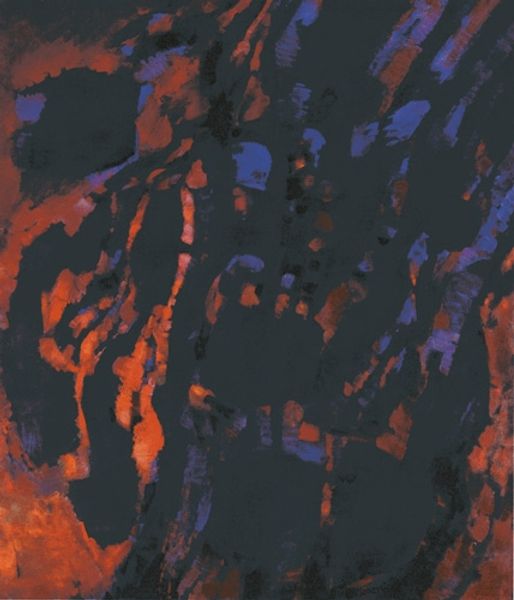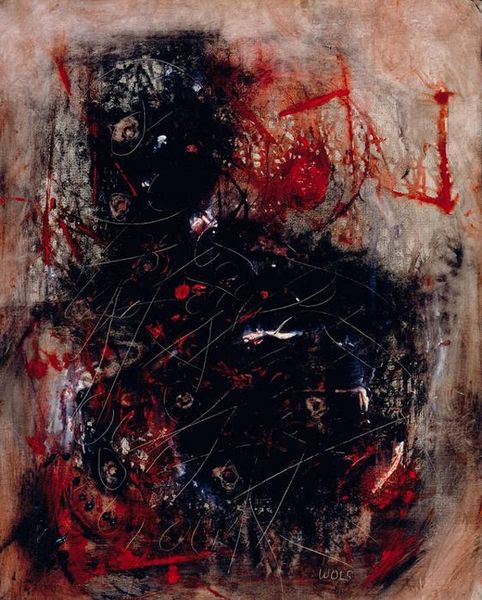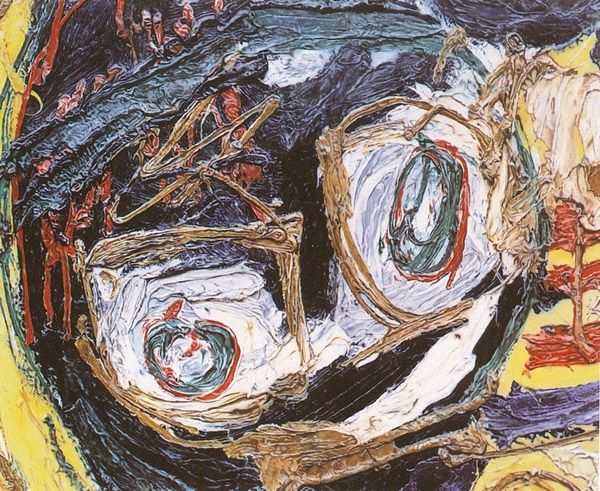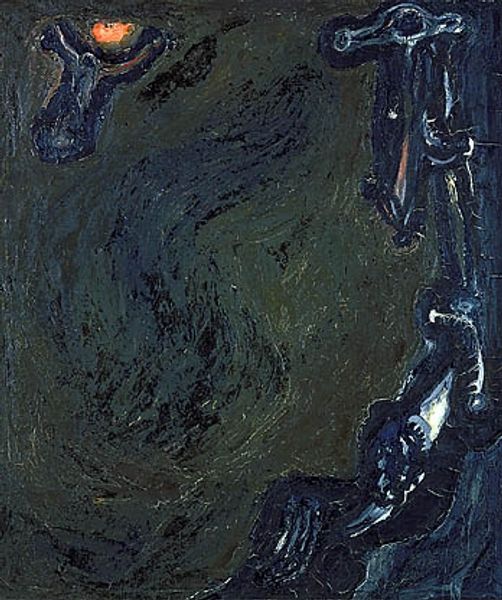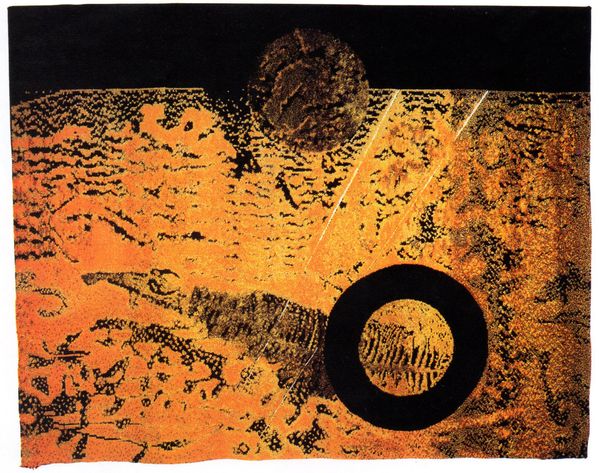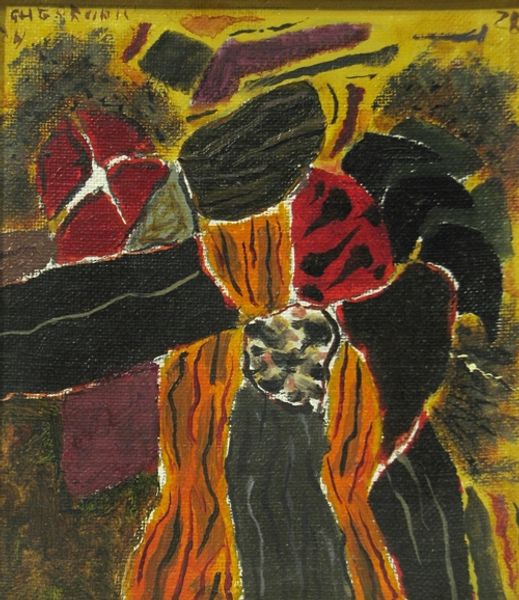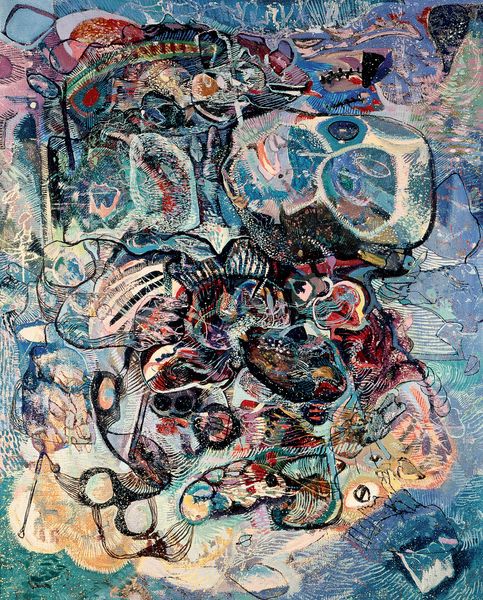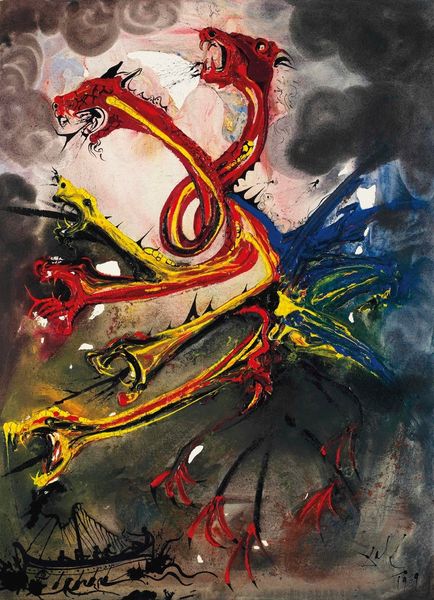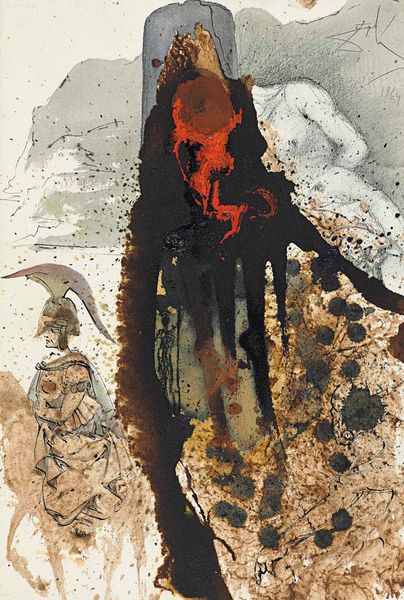
matter-painting, painting, impasto
#
abstract-expressionism
#
abstract expressionism
#
abstract painting
#
matter-painting
#
painting
#
impasto
#
abstraction
#
abstract art
Copyright: Behjat Sadr,Fair Use
Editor: So, here we have Behjat Sadr’s “Untitled” from 1956, a painting that seems to be rendered with impasto and what’s described as matter-painting. It strikes me as quite intense, almost like a vortex. How do you interpret this work? Curator: This piece really speaks to Sadr's position as a pioneering female Iranian modernist artist. The swirling composition and the thickly applied paint resonate with the social and political turbulence of post-colonial Iran in the mid-20th century. It’s a visceral response to rapid modernization and the anxieties it produced. Editor: So the abstraction isn’t just about form, but also a reflection of societal anxieties? Curator: Precisely. Think about the historical context. Iran was undergoing significant transformations, grappling with its own identity in relation to Western influences. Sadr, having studied art in Europe, brought a unique perspective, channeling these tensions through abstraction. Does the palette evoke any particular feeling for you in relation to that idea? Editor: The darker tones, like the blacks and browns, do feel heavier, maybe suggesting a struggle. While the warmer hues hint at… perhaps, a yearning. Curator: Exactly! And that yearning can be connected to a longing for cultural authenticity amidst change. This abstract expressionist approach, layered with impasto, transforms the personal into the political. The heavy texture echoes the weight of tradition and the upheaval of progress. What does it tell us when a female voice uses abstract means to express these issues? Editor: That's a powerful point. Using abstraction perhaps provided a space to express anxieties that might have been otherwise silenced in that context. Curator: Precisely, and seeing Sadr claim that space is incredibly powerful. Editor: I see this painting in a totally different light now. It’s not just abstract expressionism, it’s a commentary on cultural identity and political struggle, expressed through the hands of an Iranian woman in the 1950s. Curator: Indeed. It is abstraction with a cause, one where aesthetics and identity coalesce.
Comments
No comments
Be the first to comment and join the conversation on the ultimate creative platform.
